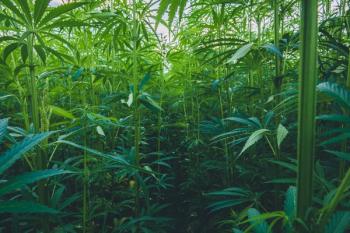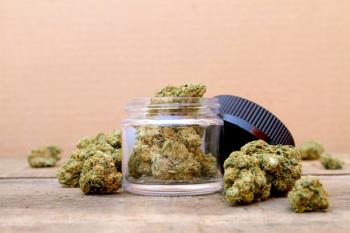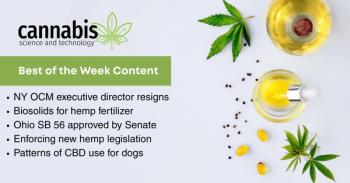
Cannabis Science and Technology
- November/December 2020
- Volume 3
- Issue 9
The FDA is Coming…Will the Cannabis Industry Be Ready? Part II: In-House Testing for Extractors

How will the need for increased testing impact extractors?
In part I of this series I made the case for how US Food and Drug Administration (FDA) regulation will help our industry make safer and effective medicines profitably. In this and upcoming installments I will take a detailed look at how FDA regulation will impact cannabis businesses. Expect to see changes in how we manufacture, formulate, and test our products. Regulation will also mean increased record keeping, and will impact how employees are hired and trained. In this installment, I discuss how the need for increased testing will impact extractors.
In a previous column I made the case for “cannabis is medicine, test it like medicine,” and promoted the use of the pharmaceutical industry testing paradigm in our industry (1). This paradigm requires what I call “cradle-to-grave” testing, meaning testing is not just required at the end of the manufacturing process, but at every point in the supply chain and at every manufacturing step.
If we were to follow the journey of a cannabidiol (CBD) molecule from being synthesized inside a cannabis plant to its presence in a tincture bottle, it might look something like this:
Grower ➡ Extractor ➡ Dispensary ➡ Customer
Of these four stages, the one where the most testing will be required is the extractor.
Many in this industry don’t like to think of it this way, but an extractor is a chemical manufacturer. They perform operations including extraction, precipitation, distillation, and dissolution, all of which are chemical processes. And yes, extractors are pharmaceutical manufacturers because they are making cannabis medicines. Let’s walk through the process that a typical manufacturer might go through to turn hemp into a medium-chain triglyceride (MCT) oil tincture and discover when and where testing will be done. If your process differs from this one, please try to imagine at which steps in your process testing should be done.
What Cradle-To-Grave Testing Looks Like for Extractors
The incoming hemp biomass will need to be analyzed by the full complement of tests that states have in place for final products. You should perform a cannabinoid profile on your raw plant material, to make sure you are getting what you paid for and to make sure this material is appropriate for the processing you are about to perform on it. You should also obtain a terpene profile on this biomass as terpenes are an important part of the user experience, and to make medicines consistently you need to know the amount of all the active ingredients in your raw material including terpenes. There exist methods for analyzing for cannabinoids and terpenes in biomass that are appropriate for in-house testing (2).
You will also want to test the biomass for pesticides. These materials are of course highly regulated (3). The problem with inhalable products is that it introduces pesticides directly into the bloodstream. Also, it is well known that some pesticides can concentrate during the manufacturing process. So, even if biomass has acceptable levels of pesticides, an extract or distillate made from it may be above legal limits, which is why it is important to test biomass for pesticides. Some methods for pesticide analysis in cannabis can be found in the literature (4–7).
Biomass should also be tested for heavy metals. Most states regulate the concentrations of the “four metals of the apocalypse:” arsenic, cadmium, mercury, and lead (8). These metals are highly toxic and have no useful biological function, hence the need to limit human exposure to them. The problem with cannabis is that it has been shown to bioaccumulate metals. So even if the water, soil, and other agricultural inputs have acceptable levels of metals, the plant may concentrate them until they are at unacceptable levels. This is why you can’t assume that metals testing on water and soil will predict the metals content of biomass, you have to test the plant material as well. There exist methods for analyzing for metals in cannabis plant material (9).
Biomass should also be tested for mold, fungi, mycotoxins, moisture, water activity, and anything else your state regulations require. In the pharmaceutical industry, incoming raw materials are tested extensively for identity, potency, and purity. We need to do the same in our industry. Why? Because the products we make are going into and onto human beings, so we need to do all within our power to protect the health and well being of our customers.
After purchasing biomass a processor will then typically extract it with a solvent to concentrate the cannabinoids and terpenes. Amongst the solvents used are hydrocarbons such as butane, ethanol, and supercritical CO2. Since the Food and Drug Administration (FDA) will require you to test after every manufacturing step, raw extracts need to be tested before being further processed. At this point a cannabinoid profile should be measured to see how efficient the extraction was. I have seen extractors use this data to optimize their extractions and increase yield by 10% to 20%. So not only is cradle-to-grave testing the right thing to do, it is also the profitable thing to do. There exist analyzers and methods for measuring cannabinoids and their stability in cannabis extracts (10,11).
Raw extracts are then often dissolved in ethanol and the resultant solution is placed in a freezer to precipitate the fats and waxes. These are then filtered out. While working as a laboratory director for a cannabis extractor, we found that the filtered fats and waxes contained 20–30% cannabinoids. That is a lot potential product and money to be throwing away. Testing the precipitate at this point allows optimization of the winterization process, reducing the amount of cannabinoids thrown away, ethanol used, and freezing conditions, thus increasing profitability.
After winterization we have a solution of cannabinoids in ethanol. We of course need to get rid of the ethanol, which is often times removed by rotary evaporation. The concern here is that we get rid of all the ethanol. Having the ability to test for residual solvents at this point is important to insure compliance with extant regulations. Also, when we go to distill a winterized extract if there is residual solvent present it will form bubbles and cause the liquid in the pot to “burp,” sending undistilled material up into the distillation column. This is best avoided. Methods exist for determining residual solvents in cannabis (12). After evaporation of the solvent, the winterized extract should be tested for cannabinoids to insure the process has been performed according to standard operating procedures.
Winterized extracts are often times heated to decarboxylate them. This reaction involves the carboxylic acid functional group of an acid cannabinoid splitting off a molecule of CO2 to yield the non-acid form. Here are two of the more important reactions:
THCA ➡ THC + CO2
CBDA ➡ CBD + CO2
The reason we do this is that the cannabis plant does not give us much tetrahydrocannabinol (THC) or CBD, the economically important cannabinoids, but their acid precursors tetrahydrocannabinolic acid (THCA) and cannabidiolic acid (CBDA). The FDA will require testing throughout this process to make sure that decarboxylation is done in a controlled, safe, and reproducible fashion. It also makes economic sense to test for cannabinoids during this reaction to make sure it is performed to completion, and if you know when it is done you can save time, energy, and money. So, yet again testing is the profitable thing to do. Mid-infrared (IR) spectroscopy can be used to follow this reaction to completion (13).
At some extractors decarboxylation is performed by heating the biomass. As a chemist I have reservations about this as the plant material is chemically complex, and heating will produce all kinds of side reactions that may adversely affect the color and flavor of extracts made from this biomass. That is why I recommend to my extraction customers that they heat the winterized extract to decarboxylate rather than the biomass.
After winterization and decarboxylation our extract is now ready to be distilled to concentrate the cannabinoids. Winterized and decarboxylated extracts should be tested prior to distillation because they are a starting material and we want to know what we are putting in the pot to make sure it is of appropriate composition. Small amounts of distillate can be drawn off during the process and tested to make sure the distillation is going according to plan. Lastly, the final batch of distillate should be tested for potency to make sure the product made is within specifications. Methods exist to test distillate for cannabinoids (14).
Let’s imagine at this point we have a distillate that is 90% CBD and we want to make an MCT oil tincture out of it. First, the MCT oil itself must be tested for identity. My own work with IR spectroscopy has shown that the chemical composition of MCT oil varies greatly from vendor to vendor and batch to batch. Therefore, you need to invest in the ability to test MCT oil to make sure you are getting a quality and reproducible starting material. And since MCT oil is a raw material that goes into a product that will be ingested by human beings, the FDA will require it to be tested as well.
To make your tincture you may either weigh out the ingredients or dispense them by volume. In the case of weighing, you will need to have a balance that has been calibrated using what are called National Institute of Standards and Technology (NIST) traceable standards. NIST is the Federal government agency tasked with issuing standards and standard reference materials for US industry. There exist well established standards and methods for calibrating balances, or devices that dispense liquids by volume. You will need to make sure your balances and dispensers are calibrated in a NIST-consistent fashion to pass muster with the FDA.
Let’s say we finally have an MCT oil tincture that according to the weights used is 5 weight % CBD. At this point you will be expected to test this final product to make sure you have the CBD amount right. You will be required to test each batch of tincture, and you should test a representative sample of the tincture bottles you make as well. In-house compatible methods exist for tincture analysis (15).
What about Third Party Testing?
As I have pointed out in the past, third party testing is not a substitute for in-house testing because it is too slow (1). Imagine you make a batch of extract and it must be tested before you can process it further. You could take a sample, send it out for testing, and wait days or weeks for results. In the meantime your extract is losing potency, taking up space, and not making you any money. If you had your own in-house cannabis analyzer you could get results in a few minutes, streamlining your manufacturing process.
However, third party cannabis laboratories still have a role to play. Regulations require that your final product be tested by a third party laboratory for testing to make sure it is compliant with applicable laws and label claims. This battery of tests may include a cannabinoid profile, terpenes, pesticides, heavy metals, and so forth.
A recent informal survey I saw showed that upwards of 2/3 of extractors are not doing any in-house testing. This is crazy for two reasons. First, by not doing in-house testing you are losing money as indicated above. Secondly, by not testing you will not produce a consistent product. This product will more often disagree with your label claims, meaning it will more often fail compliance testing. This will drive up your costs since you have to re-test, remediate, or scrap your product.
Be Prepared to Set Up a Testing Laboratory
Because of the need for significant amounts of in-house testing, all extractors should set up an in-house testing laboratory. In a perfect world where money is no object, I would like to see all cannabis businesses have the ability to test for cannabinoids, terpenes, pesticides, and heavy metals amongst other things. The reality of course is that this is terribly expensive. Pesticide analyzers can cost more than $500k, and heavy metals testers can cost over $200k, so these are not practical for most cannabis businesses. However, there exist cannabis potency analyzers that cost around $25k that are capable of giving a cannabinoid profile on a wide variety of samples (16). When advising cannabis businesses who are building out an in-house laboratory, I recommend that they start with a potency analyzer. As you saw above, potency testing is the most informative and most often type of in-house testing performed. In fact, advice on how to build out a laboratory would make for a good future column.
Conclusions
FDA regulation means that cannabis extractors need to think of themselves as pharmaceutical manufacturers and act accordingly. This includes cradle-to-grave testing. We walked through a typical extraction process, and saw the need for testing biomass, raw extract, winterized extract, the decarboxylation reaction, distillates, and final products. We also discussed the role of third party laboratories in all this, and the practicality of cannabis businesses setting up their own analytical laboratories.
References
- B.C. Smith, Cannabis Science and Technology 2(4), 12–14 (2019).
- B.C. Smith and C. Fucetola, Cannabis Science and Technology 3(6), 24-38 (2020).
- California Bureau of Cannabis Control Regulations, Section 5719.
- J. Konschnik, H. Krug, and S. Kassner, Cannabis Science and Technology 1(1), 42 (2018).
- K. Stenerson and G. Oden, Cannabis Science and Technology 1(1), 48 (2018).
- R. Jordan, L. Asanuma, D. Miller, and A. Maherone, Cannabis Science and Technology 1(2), 26 (2018).
- A. Dalmia, E. Cudjoe, T. Astill, J. Jalali, J. Weisenseel, F. Qin, M. Murphu, and T. Ruthenberg, Cannabis Science and Technology 1(3), 38 (2018).
https://govt.westlaw.com/calregs/Document/I1362951A423B4B44BCD7D0698108A1D4?viewType=FullText&originationContext=documenttoc&transitionType=CategoryPageItem&contextData=(sc.Default)&bhcp=1 .https://www.perkinelmer.com/lab-solutions/resources/docs/app_nexion_icp_ms_titan_mps_heavy_metals_in_cannabis_014714_01.pdf .- B.C. Smith, Terpenes and Testing Jan.-Feb., 32 (2018).
- B.C. Smith, Terpenes and Testing Nov.-Dec., 48 (2017).
https://www.agilent.com/en/solutions/cannabis-hemp-testing/residual-solvents-testing-for-cannabis-hemp .- B.C. Smith, manuscript in preparation.
- B.C. Smith, P. Lessard, and R. Pearson, Cannabis Science and Technology 2(1), 48 (2019).
- B.C. Smith, C. Fucetola, K. Erhmentraut, and T. Hagan, Terpenes and Testing, Sept., 18-24 (2020).
- B.C. Smith, Cannabis Science and Technology 2(6), 10–14 (2019).
About the Columnist
Brian C. Smith, PHD,is Founder, CEO, and Chief Technical Officer of Big Sur Scientific. He is the inventor of the BSS series of patented mid-infrared based cannabis analyzers. Dr. Smith has done pioneering research and published numerous peer-reviewed papers on the application of mid-infrared spectroscopy to cannabis analysis, and sits on the editorial board of Cannabis Science and Technology. He has worked as a laboratory director for a cannabis extractor, as an analytical chemist for Waters Associates and PerkinElmer, and as an analytical instrument salesperson. He has more than 30 years of experience in chemical analysis and has written three books on the subject. Dr. Smith earned his PhD on physical chemistry from Dartmouth College.
How to Cite this Article
B. Smith, Cannabis Science and Technology 3(9), 8-11 (2020).
Articles in this issue
Newsletter
Unlock the latest breakthroughs in cannabis science—subscribe now to get expert insights, research, and industry updates delivered to your inbox.




